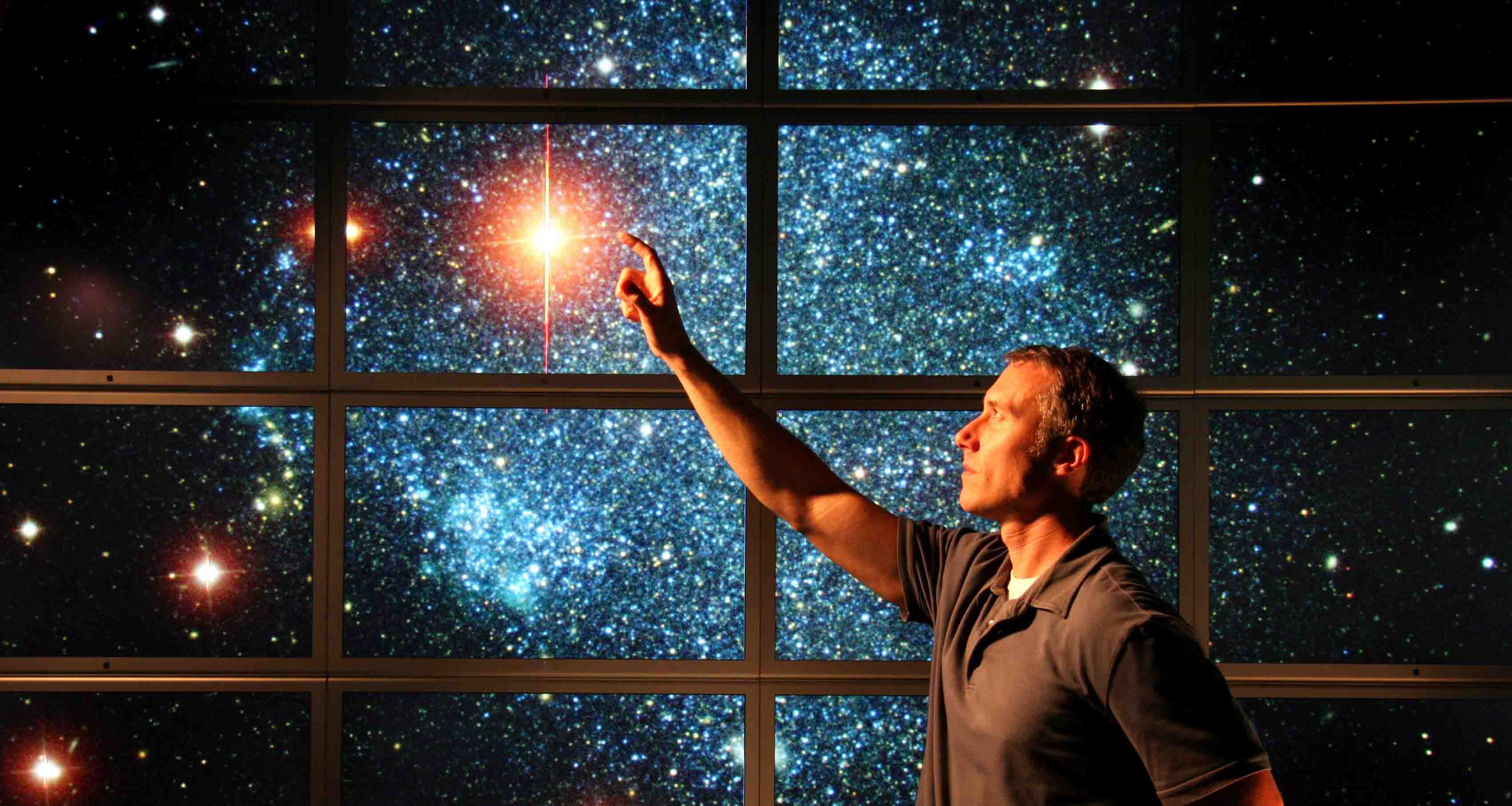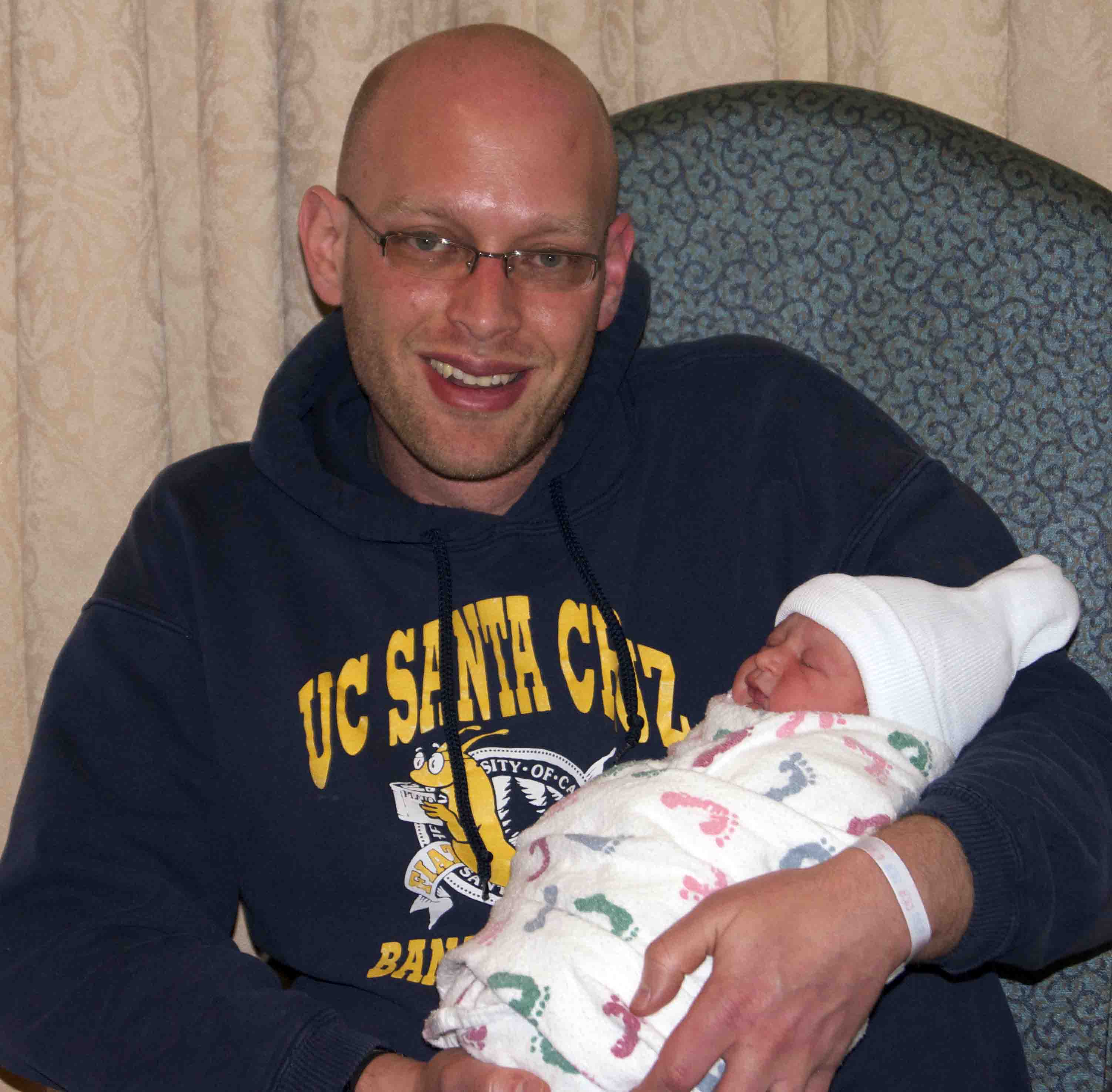
James Bullock in front of the "Optiputer" at UCI. Daniel A. Anderson
James S. Bullock, professor of astronomy and astrophysics at UC Irvine, was captivated by astronomy at age 8 by Carl Sagan’s TV series Cosmos. Today he explores such fundamental questions of cosmology as: Why there is so much invisible dark matter compared to the amount of ordinary matter in galaxies? What is this “missing mass”? Director of the multicampus UC Southern California Center for Galaxy Evolution, he represents the UC Irvine on the UC-HiPACC council. Outside the office, he teaches astrophysics and observing techniques to talented high school students as part of the California State Summer School for Math and Science (COSMOS), runs a blog “Cosmo for the People,” and appeared in the National Geographic Channel special “Inside the Milky Way.” More about James Bullock appears at http://www.physics.uci.edu/~bullock/Home.html .

Mark Krumholz and his son Ethan
Mark Krumholz, assistant professor of astronomy and astrophysics at UC Santa Cruz, asks: why do stars have the masses they do? This big question has fascinated astrophysicists since the 1920s because it leads to other neat questions, such as how galaxies form and why is the universe suitable for life. Using a mix of numerical (computational) and analytic (theoretical) techniques, Krumholz is exploring the formation of massive stars, the structure and evolution of molecular clouds in space, and processes that regulate star formation in galaxies. Out of the office, he launched the volunteer UC Santa Cruz Project for Inmate Education (PIE), teaching mathematics to inmates in the Santa Cruz County Jail, and he enjoys being dad to infant Ethan. More about Mark Krumholz appears at http://www.ucolick.org/~krumholz/ .

Snavely is an avid long-distance racing cyclist
_snavely.html ). At the time of his death, he was exploring the potential of phase-change memory for a possible next generation of supercomputers. Twenty times faster than NANDflash, which is used in the SDSC’s new Gordon supercomputer that just came online in January 2012 with blindingly fast access to 1/3 petabyte of data, phase-change memory could increase access speeds by an order of magnitude. Snavely was conceptualizing a follow-on to Gordon he called Phaser, to keep up with the data deluge. Out of the office, Snavely was an avid long-distance racing cyclist; the photo captures him near the end of the 112-mile bike leg of the Vineman triathlon in 2011.